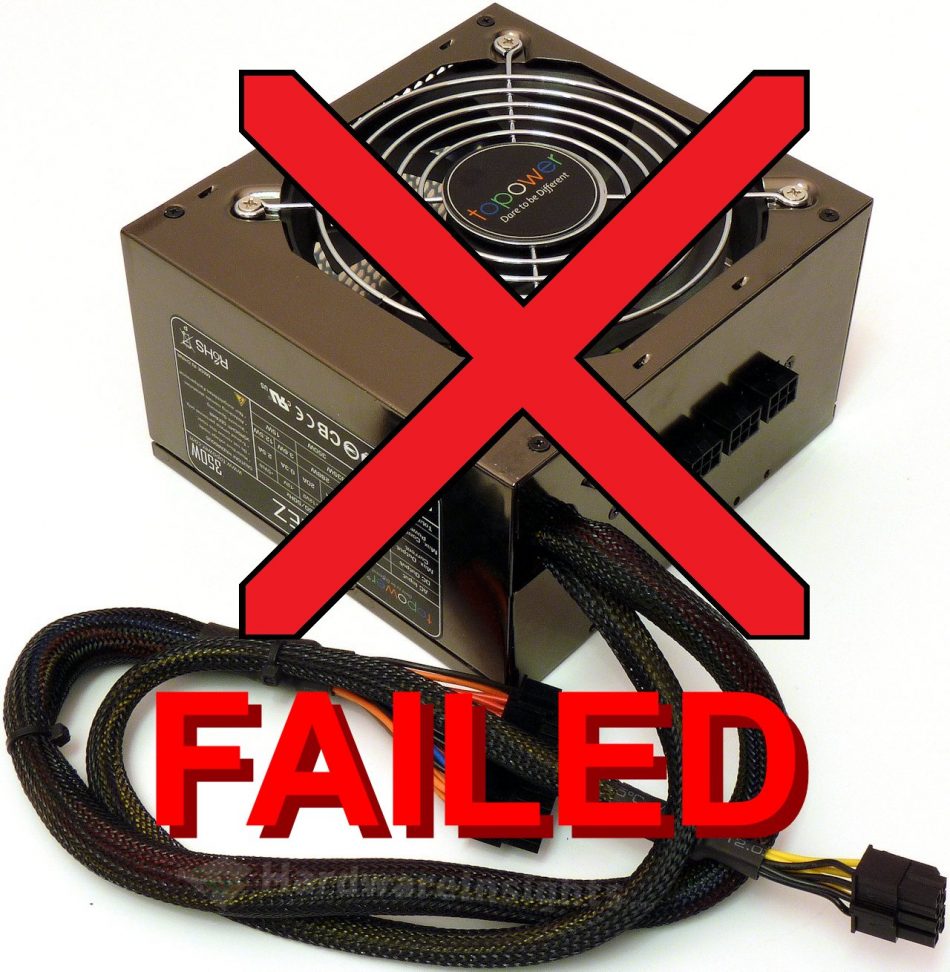Contents
- 1Introducing the Topower SilentEZ 350W
- 1.1Packaging and accessories
- 2Connectors & cabling
- 2.1Casing & cooling
- 3Input filtering
- 4Primary side
- 4.1+5 V stand-by rail
- 5Secondary side
- 5.1Build quality
- 6Load testing
- 6.1Loading +5 V SB
- 6.2Hold-up time
- 6.3Combined loading
- 6.4Combined loading ripple
- 6.5Crossloading, overloading
- 6.6Crossloading, overloading ripple
- 6.7Fan speed, temperatures and noise
- 7Conclusion and evaluation
- 7.1Thanks
- 7.2Discussion
Conclusion and evaluation
The Topower SilentEZ 350W delivered the rated power both in combined loading and crossloading, but it still failed to deliver the power in accordance with the ATX specification, so according to my evaluation methodology, it is not deserving of an evaluation. Compared to most other cheap low-end units we have seen, it is probably the best so far. The SilentiumPC Elementum E1 SI-350 is the closest one and second-best, but while it has better efficiency, the hold-up time is even worse and the ripple suppression is not as good as that of the SilentEZ 350W. I think this ancient unit shows that Topower could make good units if they wanted, but in their hasty adoption of new technologies and features they often missed important aspects.
Take the voltage regulation, while load regulation is rather nice, line regulation is far from good. And crossload regulation is close to disastrous, the cheaped-out +3.3V magamp circuit does not even provide rated power. I wonder why Topower labeled it at 21 A for 350W unit in the first place, it made no sense even 9 years ago. As stated, hold-up time is better than of the SI-350 when it reaches slightly over 10 ms, but ATX requirement is 17 ms for voltage. Modular cabling is nice, but the way Topower implemented the PCIe cabling, you can easily short all the rails together and to ground just by connecting the cable by the wrong end, while they are both pin compatible. Similar situation is with cooling, for its era the unit was very silent, but the internal temperatures are so extreme they may even surpass some of those cheap half-bridge gutless wonders we have seen.
The only good thing which remains are protections, there is OPP which appears to work. In worst case, the VIPer22A’s OTP saves the day when you push it and the unit overheats because of so slowly-spinning fan. I can only see one use for such unit today, for old sub-200W rigs in new case where the unit is mounted on the bottom. Good that it is on sale-out and most such units are long gone, there is nothing really to miss. The few advantages are pretty much balanced by heavy disadvantages. It is only a pity that even today not only low-end, but actually also many mainstream units share some of the SilentEZ 350W shortcomings, 9 years later.
 Pros Pros |
+ cheap, yet uses safe topology + working overload protection + great ripple suppression + proper safety-rated input filtering components + modular cabling + silent most of the time + reasonable efficiency |
 Cons Cons |
− poor component quality − chloroprene glue − too slow fan, very high internal temperatures − problematic cabling − bad voltage regulation − unsafe fan button cabling, mediocre soldering |
 Be aware of… Be aware of… |
/?\ buying this unit |
Thanks
I thank our supporters for donations for buying such units.


